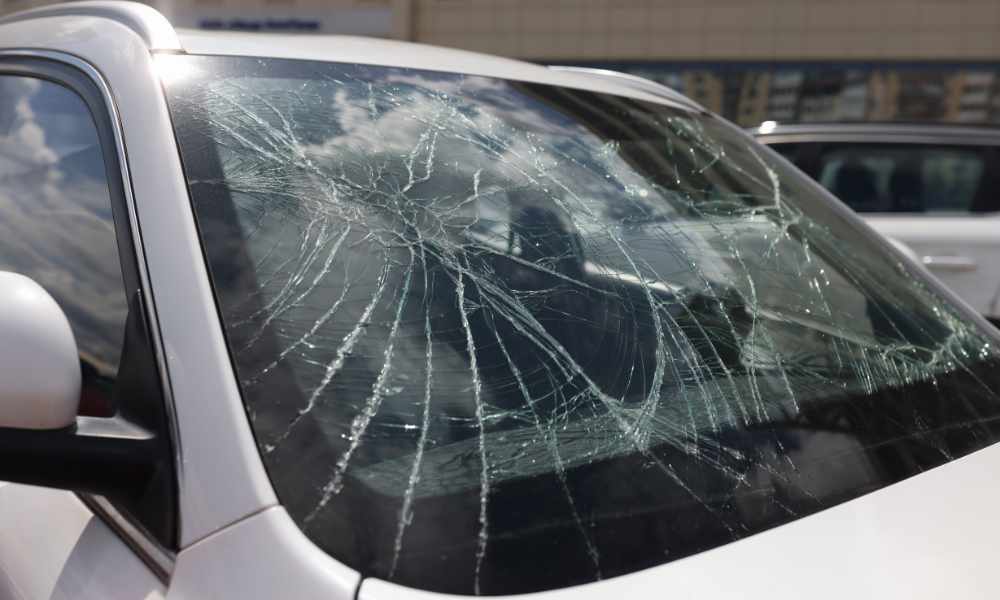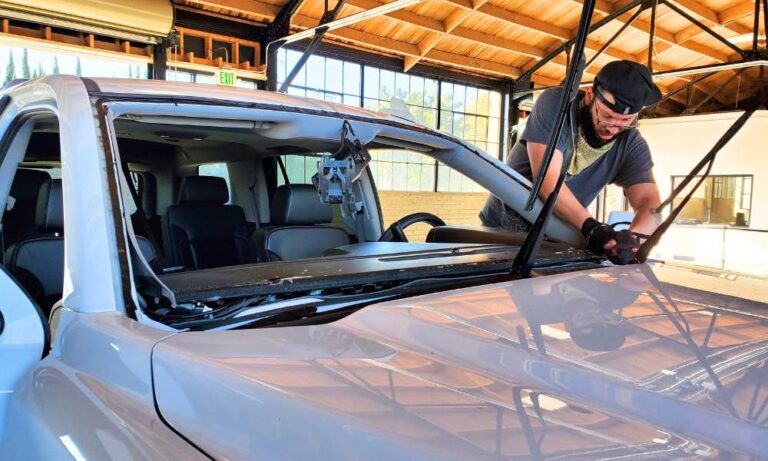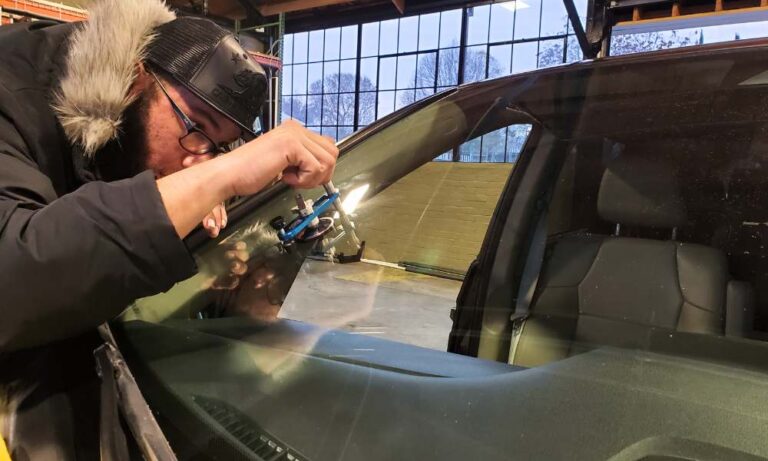Understanding the Importance of Auto Glass Repair for Your Safety...
Common Signs of a Defective Windshield: How to Spot Potential Issues

The windshield of a vehicle serves as more than just a protective barrier against wind and debris while driving. It is a crucial component that ensures the structural integrity of the vehicle and provides clear visibility for the driver. However, like any other part of a car, windshields are susceptible to damage and wear over time. Recognizing the signs of a defective windshield is essential for maintaining your safety on the road. In this blog post, we will explore the common signs of a defective windshield and discuss how to spot potential issues before they become major problems.
How to spot potential issues in a windshield?
1. Chips and Cracks:
One of the most noticeable signs of a defective windshield is the presence of chips and cracks. Small chips caused by flying gravel or road debris may seem insignificant at first, but they can quickly escalate into more significant cracks, compromising the structural integrity of the windshield. Cracks can obstruct the driver’s vision and weaken the glass, increasing the risk of shattering during a collision. Therefore, it is essential to address even the smallest chips and cracks promptly.
2. Bull’s Eye or Star-Shaped Damage:
Bull’s eye or star-shaped damage refers to circular or star-like cracks that occur when an object strikes the windshield. This type of damage can be caused by rocks, hail, or other objects colliding with the glass. These cracks can expand over time, impairing visibility and making the windshield more vulnerable to further damage. If you notice any bull’s eye or star-shaped damage, it is crucial to seek professional assistance to assess the extent of the problem and determine the appropriate course of action.
3. Discoloration or Hazing:
Over time, windshields can develop discoloration or hazing, which affects visibility and compromises the clarity of the glass. Discoloration usually occurs due to prolonged exposure to sunlight, environmental pollutants, or the use of certain cleaning products. Hazing refers to the formation of a foggy or cloudy film on the windshield, which can be caused by various factors, including aging, improper maintenance, or the accumulation of residue. Regularly inspecting your windshield for discoloration or hazing is essential to ensure optimal visibility and safety while driving.
4. Delamination:
Delamination refers to the separation of the layers of a laminated windshield. Laminated windshields consist of two layers of glass with a layer of polyvinyl butyral (PVB) in between. Delamination can occur due to extreme temperature fluctuations, exposure to moisture, or prolonged sun exposure. Signs of delamination include bubbles or air pockets forming between the layers of the windshield. A delaminated windshield is weaker and more prone to cracks and shattering. If you notice any signs of delamination, it is vital to have your windshield inspected and replaced if necessary.
5. Distorted or Warped Glass:
If you observe any distortion or warping in your windshield, it is a clear sign of a defective windshield. Distortion can occur due to various reasons, including manufacturing defects, improper installation, or stress on the glass. When the glass is distorted or warped, it can affect your perception of distance and depth, making it difficult to judge the position of other vehicles on the road. If you suspect your windshield is distorted or warped, consult a professional technician who can assess the situation and recommend the appropriate solution.
6. Water Leakage:
A properly installed windshield should be watertight, preventing water from entering the vehicle cabin. If you notice water leaking into your car during rainfall or when using the windshield washer, it is an indication of a defective windshield seal. A faulty seal can compromise the windshield’s structural integrity and lead to further damage, such as rusting of metal parts or electrical issues. Addressing the water leakage promptly is crucial to prevent additional problems and maintain the overall integrity of your vehicle.
7. Wind Noise:
While wind noise is a common occurrence while driving, excessive or unusual wind noise may indicate a defective windshield. A properly installed windshield should effectively block out excessive wind noise. If you notice a significant increase in wind noise while driving, it could indicate a problem with the windshield seal or an improper installation. It is advisable to have a professional inspect the windshield and make any necessary adjustments or replacements to restore a quiet and comfortable driving experience.
8. Loose or Damaged Moldings:
Moldings are rubber or plastic strips that surround the edges of the windshield, providing protection and securing the glass in place. Over time, moldings can become loose, damaged, or even detached due to exposure to harsh weather conditions or wear and tear. If you notice loose or damaged moldings, it is important to have them repaired or replaced promptly. Loose moldings not only compromise the aesthetics of your vehicle but can also affect the stability of the windshield, making it more susceptible to damage.
9. Fogging or Condensation:
Fogging or condensation on the interior surface of the windshield is a common issue, especially during humid weather conditions. However, if you notice persistent or excessive fogging or condensation, it could indicate a problem with the windshield’s seal or ventilation system. A compromised seal can allow moisture to enter the vehicle, leading to fogging and reduced visibility. Additionally, it can contribute to the growth of mold and mildew, which can negatively impact air quality inside the car. It is important to address any issues related to fogging or condensation to maintain a clear and safe view while driving.
10. Impact on Advanced Safety Features:
Modern vehicles are equipped with advanced safety features like lane departure warning systems, adaptive cruise control, and automatic emergency braking, many of which rely on sensors and cameras mounted on the windshield. A defective windshield can interfere with the proper functioning of these safety systems. If you notice a sudden malfunction or inconsistency in the performance of these features, it is crucial to inspect the windshield for any damage or defects that might be affecting the sensors or cameras. Addressing these issues promptly will ensure the proper operation of the safety systems and maintain the overall safety of your vehicle.
Conclusion:
A windshield plays a vital role in maintaining the structural integrity of a vehicle and ensuring clear visibility for the driver. Identifying the signs of a defective windshield is essential for prompt repairs or replacements, preventing further damage, and ensuring the safety of all occupants. From chips and cracks to discoloration, delamination, and water leakage, it is crucial to be vigilant and address these issues promptly to avoid potential hazards on the road. Regular inspections and professional assistance are key to spotting and resolving potential windshield issues, ensuring a safe and comfortable driving experience. Remember, when it comes to a defective windshield, it’s always better to be proactive than to wait for a small issue to turn into a significant problem.
Contact GlassFixit on any of the following numbers:
Read more Articles
5 Reasons Why Windshield Rock Chip Repair is Essential for Your Safety
5 Reasons Why Windshield Rock Chip Repair is Essential for...


